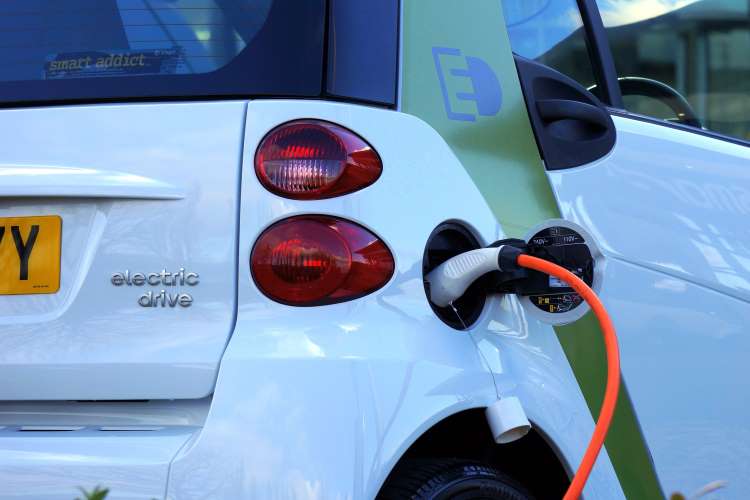
Sustainable transport refers to modes of transportation that are effective, efficient, and environmentally sustainable. The term emerged from the concept of sustainable development and describes transportation modes and systems that are consistent with broader sustainability concerns. Sustainable transport is the theme of the UN Global Road Safety Week, which will be observed from May 15 to 21 this year. The focus of the week is to encourage a shift toward sustainable modes of transportation such as walking, cycling, and public transport.
Transportation is a crucial driver of economic and social development, connecting people to jobs, education, health care, and each other. Additionally, transport enables global trade.
China, the United States, and India, the top three greenhouse gas emitters, contribute 42.6% of total emissions, with the transportation sector being the largest contributor of greenhouse gas emissions. These emissions primarily come from burning fossil fuels for cars, trucks, ships, trains, and planes. Transport accounts for approximately 64% of global oil consumption, 27% of all energy use, and 28% of the world’s energy-related carbon dioxide emissions in 2021.
READ I Doubling climate finance key to achieving net zero target
Ninety-five percent of the world’s transport energy still comes from fossil fuels. Transport is the largest source of energy-related emissions in 45% of countries, and it is the second-largest source for the rest. Aviation accounts for only around 2.5% of global carbon dioxide (CO2) emissions, while road travel accounts for three-quarters of transport emissions. Passenger vehicles, cars, and buses contribute 45.1%, and trucks contribute 29.4%. Rail travel and freight emissions are very low, contributing only 1% of transport emissions. In 2021, CO2 emissions from transport in India were 286 tonne.
Towards sustainable transport
Mobility can drive positive social change in many areas of society, promoting secure and equal access to employment, education, and health and impacting several of the broader Sustainable Development Goals (SDGs) related to poverty, gender, and sustainable consumption and production. However, there is a pressing need for governments and other stakeholders to rethink mobility, including increasing investments in walking, cycling, and public transport, modes of transport that can promote equity and health for people and the planet.
Safety must be at the core of efforts to reimagine how we move in the world. The number of road traffic deaths continues to rise, with around 1.3 million deaths per year and as many as 50 million injuries. Road traffic injuries are now the leading cause of death for children and young people aged 5-29 years. In 2021, the number of vulnerable road users (VRUs) killed in crashes in India reached 1 lakh, increasing the share of VRUs in total fatalities to 67%.
A prerequisite for rethinking mobility is to put safety at its core to ensure that roads are safe for all road users. Historically, most of the world’s roads have been designed for cars, and the number of vehicles is increasing every day. We need to redesign streets for people, starting with those most vulnerable and at risk of injury: children and adolescents, people with disabilities, pedestrians, cyclists, and users of public transport. Redesigned roads not only ensure they are safe for all, but also facilitate different modes of transport for everyone.
Making way for more walking and cycling can have a favorable impact on health and the environment, by reducing non-communicable diseases (NCDs) such as heart and lung disease, cancer, and diabetes, and decreasing air and noise pollution. Achieving a 60% share of battery-electric and plug-in hybrid vehicles on the road could save more than 60 billion tons of CO2 between now and 2050. These modes of transportation also contribute to sustainable urbanisation, which means building cities for the well-being of humans and the environment for future generations.
With an estimated 70% of the global population expected to live in urban settings by 2030, there will be an increased demand for public transport to facilitate the movement of large and growing populations. Buses, trams, and commuter trains, which carry more people than private motor vehicles, can serve as champions for safety, access, and inclusion. When public transport systems are made safe, affordable, accessible, and sustainable, cities can develop in smart and compact ways. Rural areas also need to be serviced with safe and reliable public transport.
Ground realities in India
Growing Indian cities were planned in such a way that motorized vehicles rule the roads, while pedestrians, cyclists, and users of public transport face an existential crisis. However, the Indian cycle industry is the second-largest in the world, after China.
It is worth mentioning that an average of 22 million units are made in India every year, and the annual turnover is around Rs 7,000 crore. According to the findings of the National Family Health Survey (NFHS)-5, conducted among 6,64,972 households by the Ministry of Health and Family Welfare in May 2022, 55 percent of Indian households have a bicycle, while those with scooters and motorcycles come a close second at 54 percent.
India is a land of walkers. An estimated 45 million people walk to work daily, which is 31 percent of Indian workers in urban and rural areas. Only a mere 54 lakhs used motorized personal transport, according to Geetam Tiwari in June 2022. During the pandemic lockdown, there was a tremendous increase in the number of walkers and cyclists. However, these numbers of walkers and bicycle riders are fast declining due to the safety of these vulnerable road users and lack of infrastructure.
Non-motorised transport
NMT is a sustainable mode of transport that provides accessibility to all, while having minimum emissions. The National Urban Transportation Policy (NUTP), launched in 2006, aims to provide better mobility and sustainability by focusing on people mobility rather than vehicle mobility. The policy envisions an urban mobility framework that is contextual and suited to the geographical, social, and economic needs of our cities and citizens.
The ministry of urban development has encouraged Indian cities through various initiatives and programs to adopt NMT as a key element of their integrated urban transport system. To work on this, the government linked Jawaharlal Nehru National Urban Renewal Mission (JNNURM) funds with the NUTP’s Vision launched in 2005. However, a review of these policies and programs suggests that NMT has been included in the planning of many cities but has not yielded the desired results, mainly attributed to a lack of political will and implementation.
The National Mission for Sustainable Habitat (NMSH), under the Prime Minister’s National Action Plan on Climate Change, constituted a sub-committee specifically focusing on urban transport systems under MoUD in 2015. Amongst the eight principles of sustainable urban transportation listed out by the sub-committee, ‘Walking’ and ‘Cycling’ were the focus.
The policies and missions aim to arrest the current decline in walking and cycling in the city by creating a safe and pleasant network of footpaths, cycle tracks, greenways, and other NMT facilities. However, the infrastructure that is in place for road users is biased against NMT, pushing pedestrians to the margins of the road networks, or even worse, compelling them to struggle for space with motor vehicles, thereby exposing them to injury or death (Geetam Tiwari, June 2022).
In 2021, for the first time, 400 km of arterial roads and 3,500 km in neighborhood areas were decided to be developed as dedicated cycle lanes, and preparatory works have been started at the national level under the India Cycles4Change Challenge launched by the Smart Cities Mission of the Union Ministry of housing and urban affairs. However, this plan still needs to be materialised.
It is a fact that there are several isolated examples from various cities. For instance, Paper Mills Road near Four Cross Road junction in Chennai city has separate lanes for different vehicles, and a special lane for walkers and cyclists is the highlight. There are world-class model road patches in cities like Jaipur and Pune. Bengaluru has about 10 to 15 km of exclusive cycle lanes (April 2023), although the target was 2,000 km. According to the Comprehensive Mobility Plan by DULT (Directorate of Urban Land Transport), the city of Bengaluru was supposed to get 50 km by 2022.
Even though the benefits are numerous, there are key challenges related to NMT in India, which include encroachment of NMT infrastructure, lack of proper street design, lack of focus on a proper institutional framework, improper divergence of funds for NMT, disjointed policies and goals, and a lack of integration of different transportation modes. Along with the government, let’s collectively rethink mobility and address these challenges to make sustainable transportation a reality in Indian cities.
(The writer is a consumer activist and an expert on road safety.)
George Cheriyan is Director of Centre for Environment and Sustainable Development India, a national NGO in Special Consultative Status with UN-ECOSOC, and accredited with UNEP & UN ESCAP. CESDI is also a member of South Asia Network on SDGs.


